TL;DR
- The fashion industry is a major contributor to global packaging waste, and switching to sustainable clothing packaging is now both an ethical and strategic move.
- Sustainable materials like compostable bioplastics, FSC-certified paper, and bamboo help reduce environmental harm caused by single-use plastics and microplastic pollution.
- Eco-friendly packaging boosts brand value by attracting conscious consumers, supporting compliance, and enhancing the unboxing experience.
- Key features include biodegradability, reusability, minimalist design, and renewable sourcing, ensuring both sustainability and functionality.
- Brands like Patagonia and Levi’s are leading the way, while Greenworksbio supports businesses with certified compostable alternatives built for performance and planet health.
The clothing industry is undergoing a major sustainability shift, and packaging is at the centre of it. Globally, packaging waste accounts for nearly 36% of all plastic produced, with a significant portion linked to apparel and accessories shipments (UNEP, 2024).
For clothing brands, switching to sustainable clothing packaging is no longer just an ethical choice; it is fast becoming a competitive necessity. As e-commerce drives more individual shipments, the environmental footprint of single-use plastic mailers and polybags has come under intense scrutiny.
Sustainable clothing packaging offers a viable alternative, reducing carbon emissions, aligning with circular economy principles, and resonating with a rapidly expanding base of environmentally conscious shoppers.
The opportunity is not just in switching materials, but in rethinking the role of packaging as a powerful brand statement. In the sections below, we’ll explore what makes clothing packaging truly sustainable, how to implement it effectively, and which brands are already leading the way.
What is Sustainable Clothing Packaging?
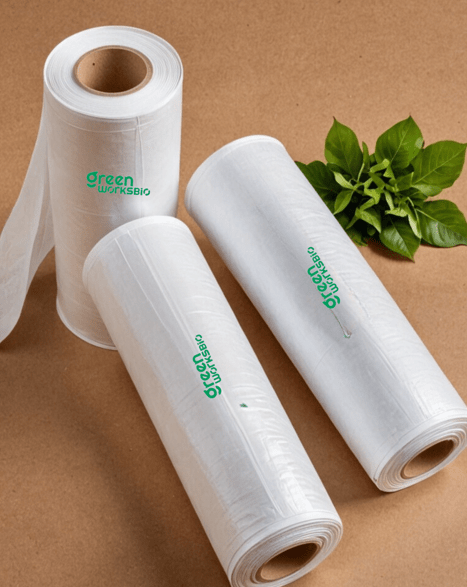
Sustainable clothing packaging refers to packaging solutions for apparel that are designed to minimize environmental impact throughout their lifecycle, from material sourcing and manufacturing to disposal or reuse. Unlike conventional plastic mailers and polybags, which often end up in landfills or oceans, sustainable alternatives to plastic use eco-friendly packaging materials for clothing that are recyclable, reusable, biodegradable, or compostable.
Globally, the packaging sector produces more than 450 million tonnes of plastic waste annually, with less than 10% being recycled. The fashion industry contributes significantly to this problem through single-use plastic garment bags, shipping envelopes, and hang tags. By shifting to sustainable packaging for clothing, brands can play a pivotal role in reducing their footprint while meeting growing consumer demand for greener products.
What is the Environmental Impact of Traditional Packaging?
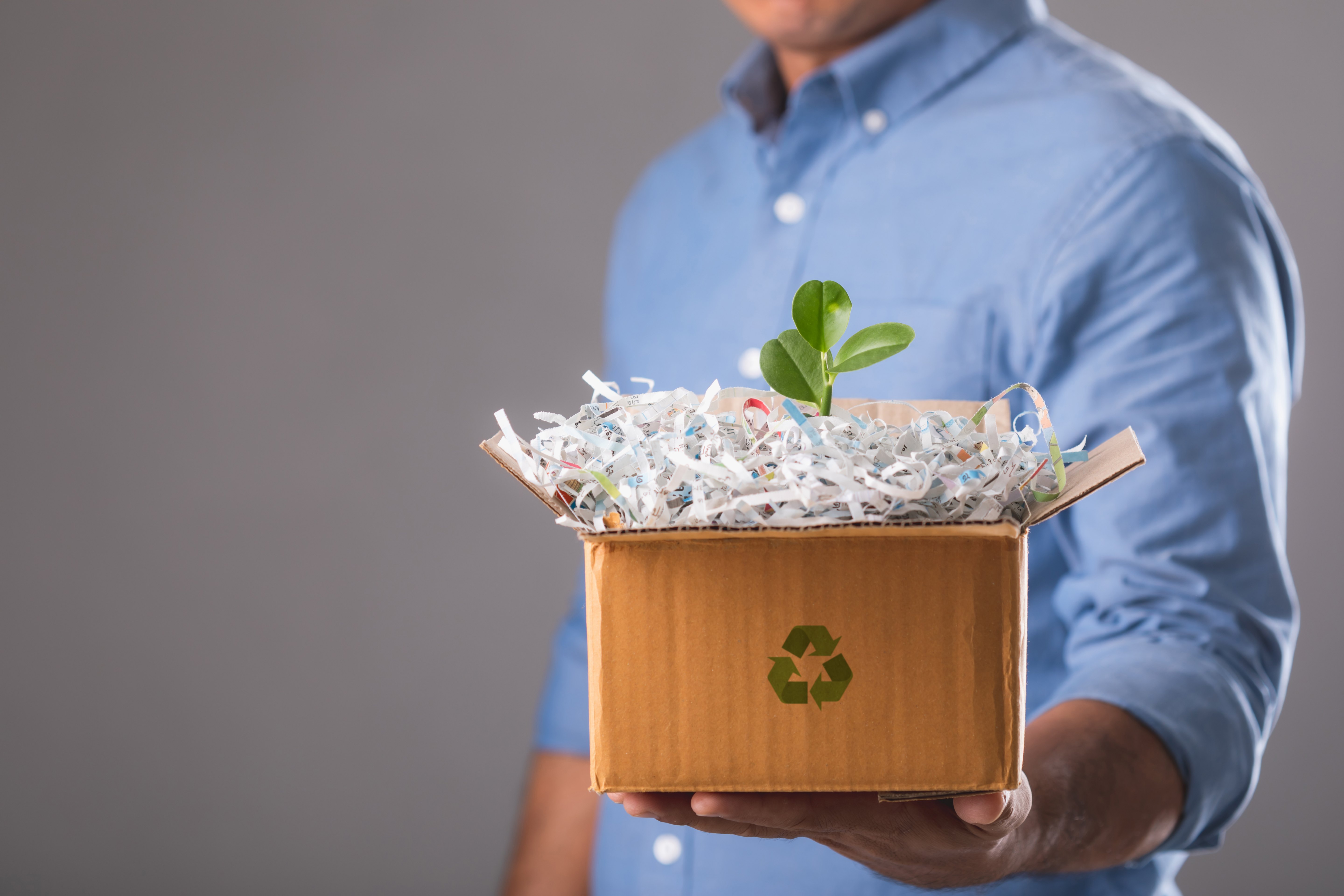
Traditional apparel packaging may protect products, but it comes at a high environmental cost. From long-lasting plastic waste to significant carbon emissions, its impact is far-reaching, making the shift to sustainable clothing packaging more urgent than ever.
1. How Much Packaging Waste Does Fashion Really Produce?
The fashion industry produces enormous volumes of packaging waste each year. A study by ScienceDirect estimates that over 150 billion garments are manufactured annually, with most shipped in single-use plastic polybags, mailers, or boxes. These materials are rarely recycled due to contamination from labels and adhesives, mixed material layers, or a lack of proper collection systems. Without intervention, these packaging formats continue to feed a growing waste crisis that impacts both the environment and public health.
2. What Happens to Packaging After It’s Thrown Away?
Traditional apparel packaging made from virgin plastics can take 400–500 years to decompose. Instead of breaking down harmlessly, they fragment into microplastics that pollute waterways, soil, and even the air we breathe. 11 million tonnes of plastic waste enter the ocean every year, with packaging waste being one of the most common contributors. This pollution affects marine ecosystems, disrupts food chains, and increases the risk of plastics entering the human diet through seafood consumption.
3. Is Packaging Contributing to the Climate Crisis?
The environmental damage of traditional apparel packaging goes beyond waste. Producing virgin plastic packaging is highly energy-intensive, releasing significant greenhouse gas emissions throughout its lifecycle. For brands, transitioning to sustainable clothing packaging is not only an environmental responsibility but also a direct way to support global climate goals and corporate sustainability commitments.
Want packaging that’s green and effective? See our list of smart eco‑friendly options.
What’s the Best Eco-Friendly Clothing Packaging for Your Business?
Choosing the right sustainable packaging isn’t just about reducing waste; it’s about delivering a thoughtful, branded experience that your customers remember. From compostable bags to reusable wraps, the best eco-friendly clothing packaging balances durability, design, and environmental impact. Let’s explore the top options for your fashion business.
1. Why Are Compostable Carry Bags a Must-Have?
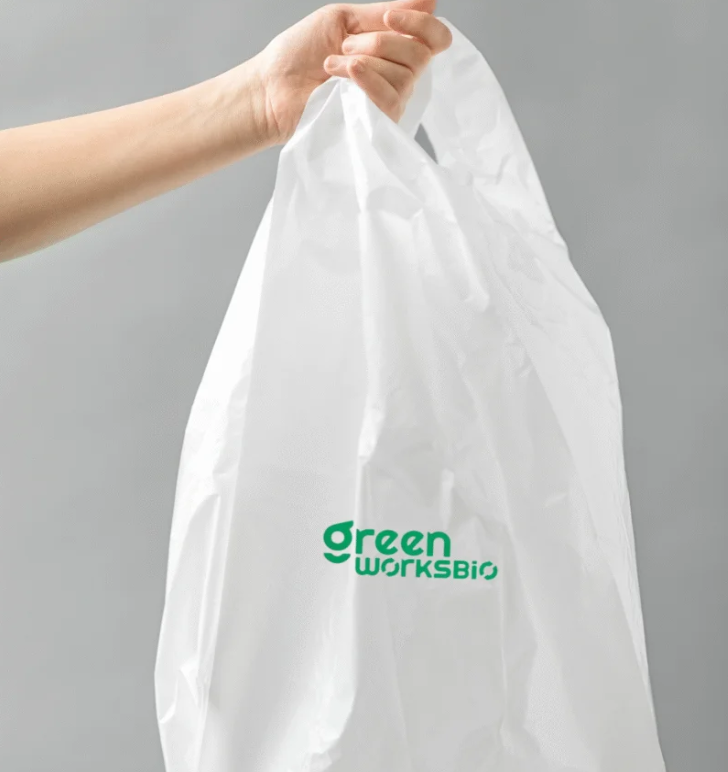
Compostable carry bags are a go-to solution for retail outlets looking to replace traditional plastic shopping bags. Made from eco friendly packaging materials for clothing like corn starch and PLA, these bags fully decompose in composting environments without releasing microplastics.
They’re especially effective in walk-in stores or boutique setups, where the bag doubles as a branding tool. When custom-printed using algae-based or water-based inks, these bags align with both style and sustainability. As part of your compostable clothing packaging strategy, they deliver high performance while reducing your environmental footprint.
Upgrade your retail packaging — explore custom compostable carry bags today.
2. How Do Clear Compostable Bags Elevate Brand Display?
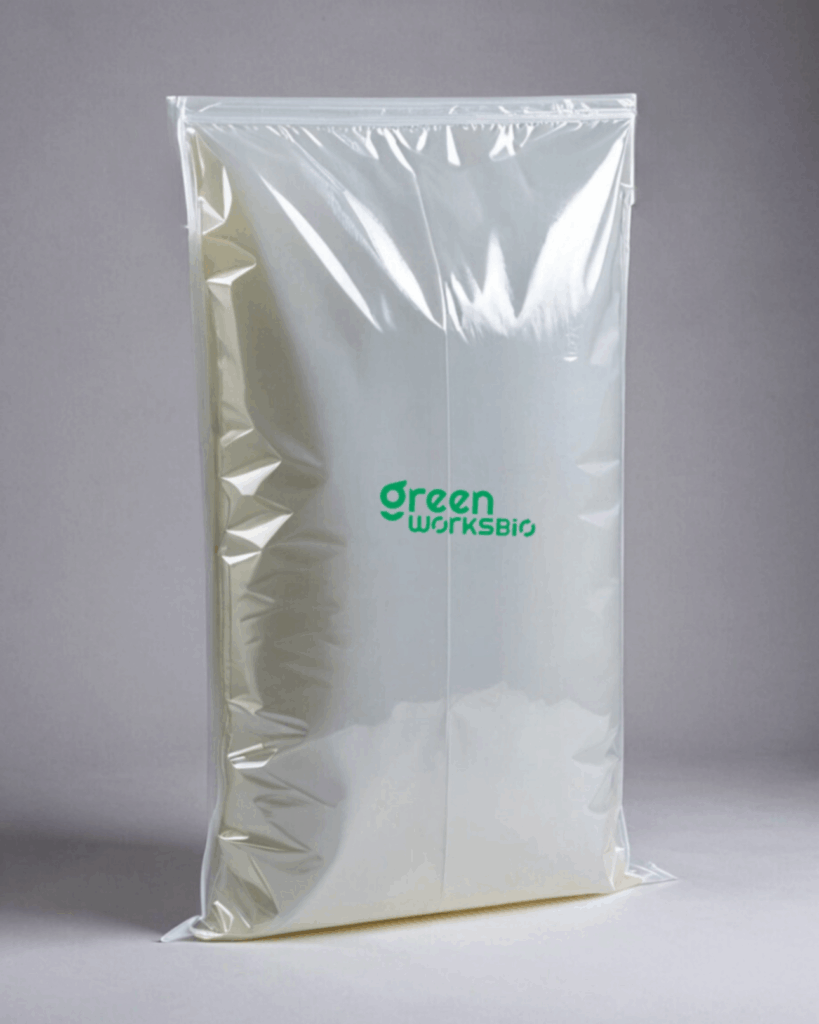
Product visibility meets sustainability in Clear compostable bags, a must for packaging folded apparel, scarves, or undergarments. These bio-based bags offer a clear, glossy finish just like virgin polybags, but they decompose without polluting the environment.
They’re perfect for showcasing your garments while supporting your sustainable packaging clothing goals. Whether you sell in-store or online, this form of eco friendly packaging for clothing sends the right message: your brand cares about both aesthetics and the planet.
Highlight your garments responsibly — try clear compostable bags now.
3. What Makes Compostable Courier Bags Perfect for Sustainable Shipping?
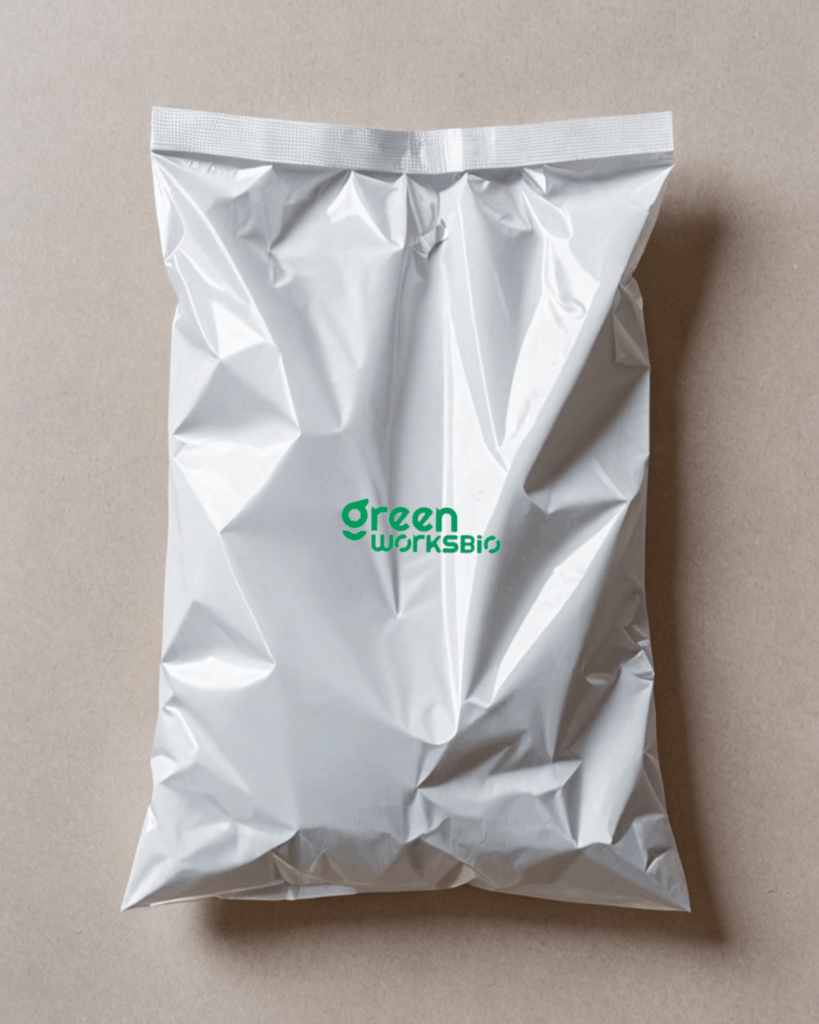
For fashion brands in the e-commerce space, compostable courier bags offer robust, tamper-proof protection while maintaining your eco friendly packaging for clothing standards. They’re designed to be waterproof, durable, and 100% compostable, making them ideal for direct-to-consumer shipping.
Replacing traditional LDPE mailers, these bags help lower carbon emissions and align with your sustainable packaging clothing initiatives. Combine them with branded stickers printed in algae ink for a polished, low-impact unboxing experience.
Go green with every delivery — switch to compostable courier bags today.
4. Why Should You Consider Compostable Bag Rolls for Custom Use?

Compostable bag rolls offer unmatched flexibility for fashion brands with diverse product lines. Whether you’re wrapping socks or jackets, you can cut the roll to your desired length, minimising waste.
They are especially useful for backend logistics, storage, or multi-product packaging setups. As a compostable clothing packaging option, they’re lightweight, space-saving, and scalable, making them a smart choice for businesses wanting custom solutions with minimal ecological impact.
Want packaging that adapts to you? Shop compostable bag rolls built for flexibility.
5. Can Recycled Kraft Paper Be Both Affordable and Aesthetic?

Recycled kraft paper is a timeless choice that fits both minimalist and premium fashion brands. It’s biodegradable, recyclable, and made from post-consumer waste, an ideal example of eco friendly packaging materials for clothing.
Use it to wrap individual garments or cushion them inside mailer boxes. Pair it with natural twine or compostable stickers, and your packaging instantly becomes a tactile part of your brand’s sustainability story. Kraft paper supports both the look and function of sustainable packaging clothing without breaking the bank.
6. Is FSC-Certified Tissue Paper Worth the Upgrade?

Absolutely. FSC-certified tissue paper ensures your eco friendly packaging for clothing meets the highest environmental standards. It’s ideal for wrapping delicate items like silk, lingerie, or knitwear while protecting fibres from dust and creasing.
Choose acid-free, soy-ink printed options to elevate presentation while maintaining your sustainable packaging clothing goals. This subtle layer makes a strong brand statement without compromising eco integrity.
7. Are Cornstarch Polybags a Real Alternative to Virgin Plastic?
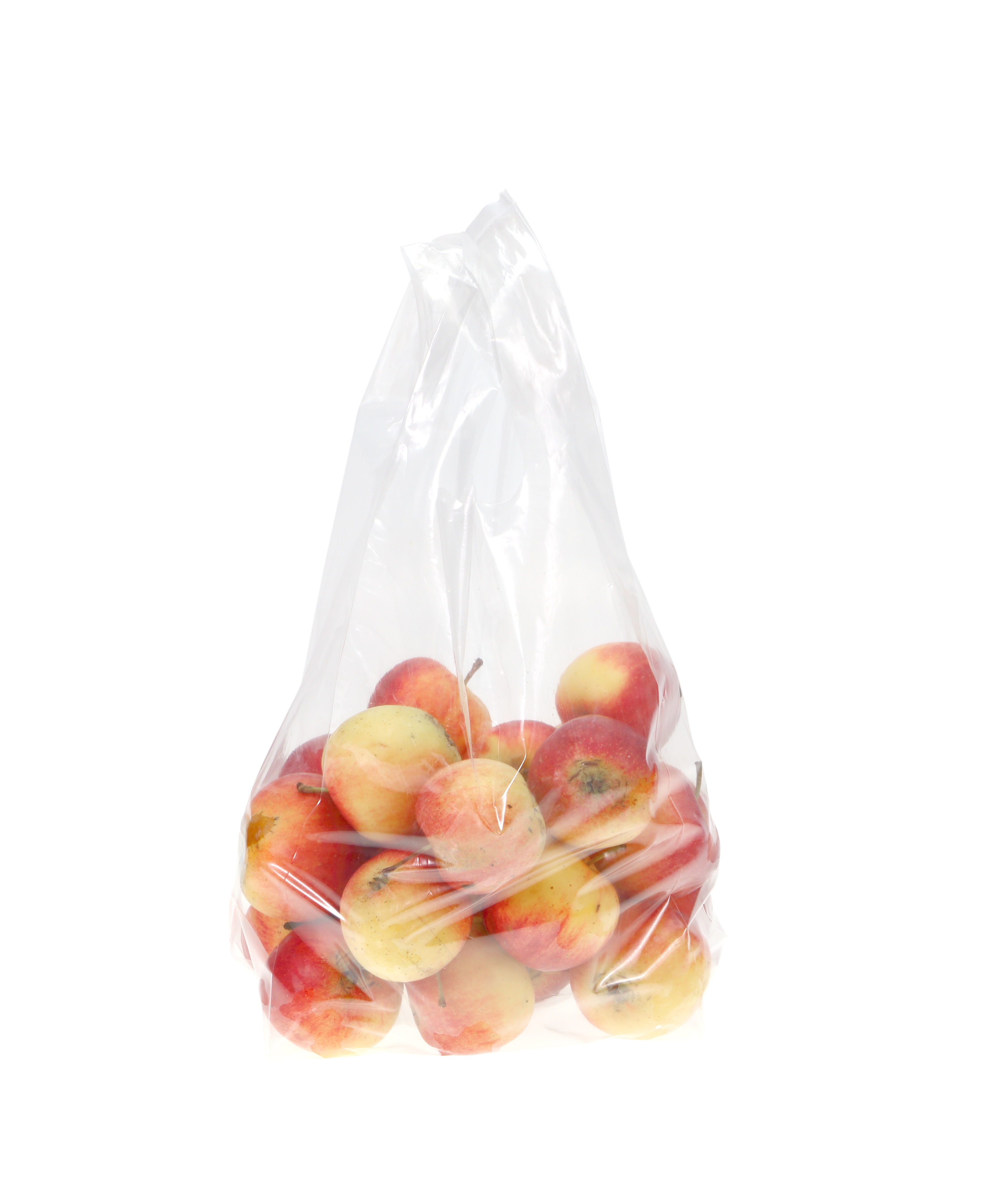
Yes, and they’re gaining momentum fast. Cornstarch-based polybags offer the same clarity and protection as traditional plastics but fully compost in the right conditions, making them a leading solution for compostable clothing packaging.
These bags are particularly effective for B2B shipments or inner garment packaging. As more fashion brands move away from virgin poly, cornstarch bags stand out as a key tool in eco friendly packaging materials for clothing.
8. How Can Plant-Based Zipper Bags Add Reusability to Your Packaging?
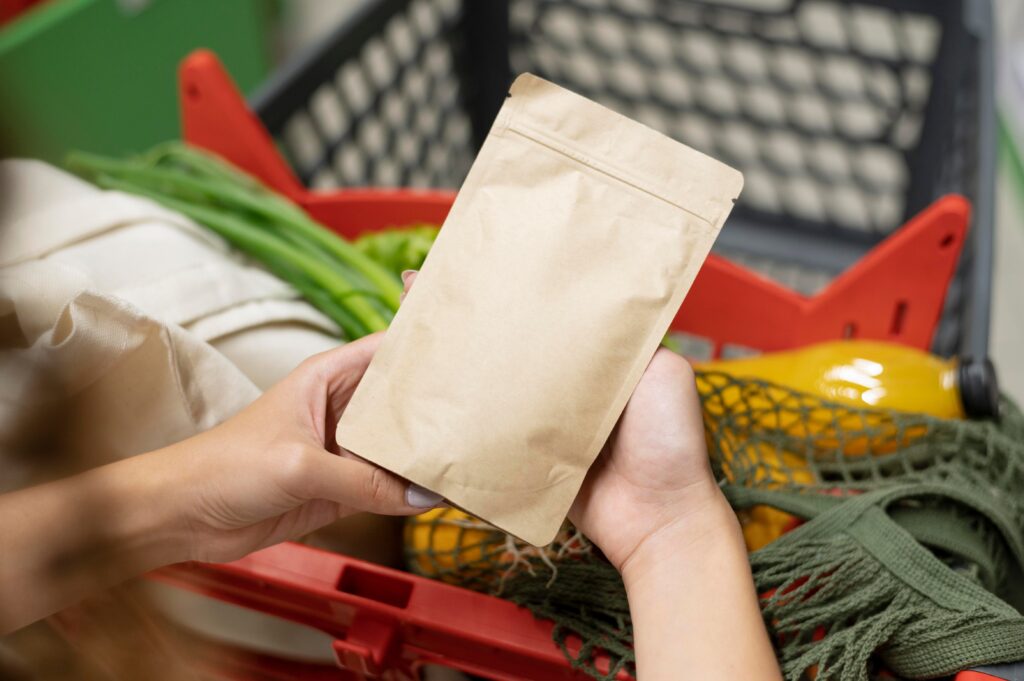
Made from PLA or other bio-resins, plant-based zipper bags offer durability and reusability, perfect for subscription boxes, luxury apparel, or accessories. These bags are an upgrade from single-use plastics and can double as storage for customers.
When used as part of your sustainable packaging clothing system, they help reduce waste and encourage repeated interaction with your brand, creating lasting value.
9. What Makes Reusable Cotton or Jute Bags a Long-Term Investment?
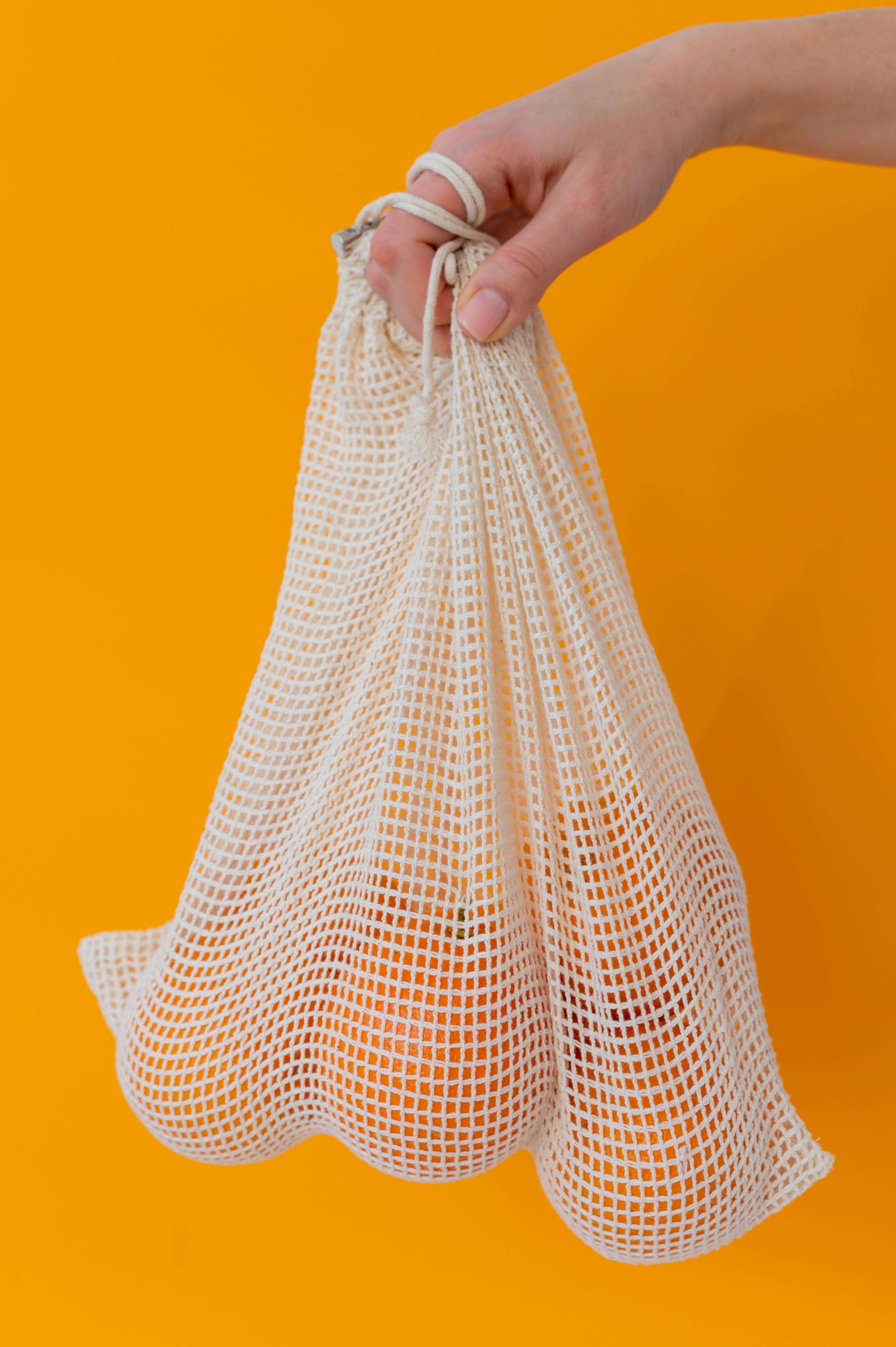
Cotton and jute bags are not just packaging; they’re marketing tools. Customers reuse them for shopping, gifting, or storage, extending your brand’s reach and reducing single-use waste.
Ideal for boutiques or premium fashion boxes, they represent the highest tier of eco friendly packaging for clothing. If you’re aiming for circular economy practices, these bags are a must-have.
10. How Does Mushroom Packaging Fit into the Future of Fashion Logistics?
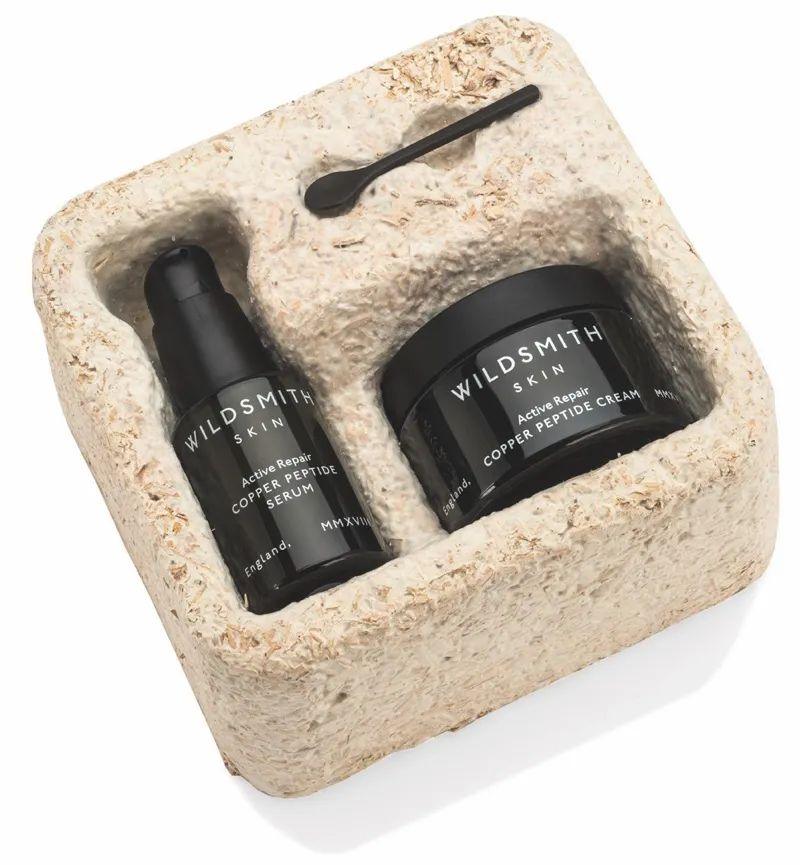
Made from agricultural waste and mycelium, mushroom packaging is an innovative material that decomposes in just 45–90 days. It’s a powerful cushioning option for delicate or high-value items like jewelry or embellished garments.
Though still niche, it offers a futuristic and sustainable alternative to plastic-based padding, great for brands looking to be early adopters in eco friendly packaging materials for clothing.
11. Why Should Fashion Brands Embrace Algae Ink and Water-Based Printing?

Even the ink you use matters. Algae-based and water-based inks contain no toxic solvents, VOCs, or microplastics, ensuring your packaging is safe for composting and recycling.
These printing options pair perfectly with tissue, kraft paper, and mailers, allowing fashion brands to maintain both visual appeal and compostable clothing packaging compliance. Your packaging looks good, and does well.
Which Brands Are Leading the Way in Compostable Clothing Packaging?
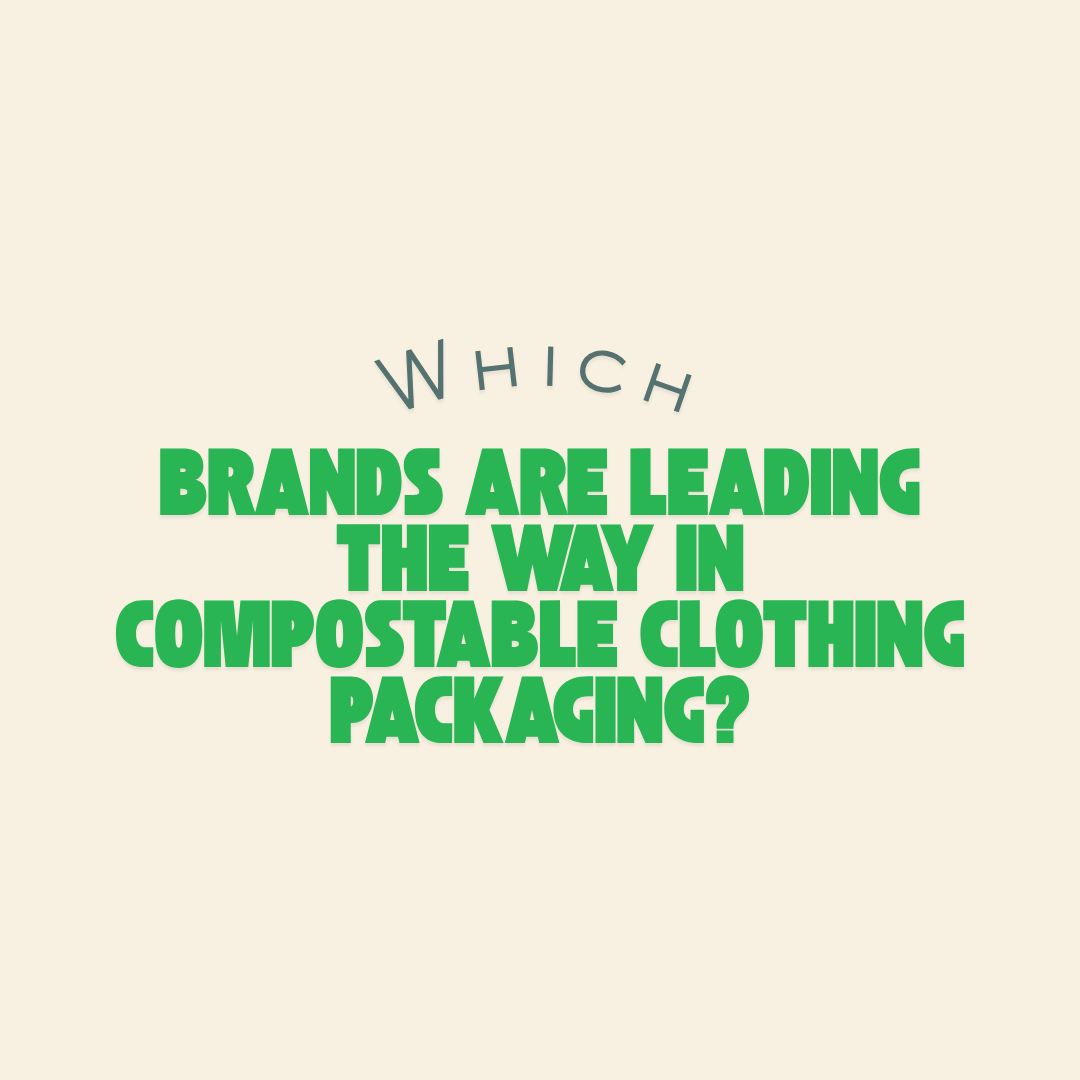
The shift to sustainable clothing packaging is no longer experimental; it’s an industry movement led by forward‑thinking apparel brands. These companies are proving that eco‑friendly packaging can protect products, strengthen brand identity, and drive customer loyalty, all while reducing environmental impact.
1. How Is Patagonia Advancing 100% Forest‑Free Packaging?
Patagonia is advancing toward 100% forest‑free packaging through its partnership with Canopy’s Pack4Good initiative. The company already uses FSC‑certified recycled paper, recycled mailers, and compostable packaging materials in its shipping and product delivery systems. Their next‑gen sustainable packaging initiative actively explores biodegradable and compostable options to eliminate plastic waste across operations. (Source)
2. How Is Levi Strauss & Co. Using Compostable Polybags and Reducing Waste?
Levi’s is piloting home‑compostable polybags developed in collaboration with Fashion for Good, made with 23–25% bio‑based content and designed for backyard or municipal composting. In parallel, the brand has adopted FSC‑certified paper and hangtags, reduced polybag use at distribution centres, and redesigned shipping cartons to minimize waste and carbon emissions. (Source)
3. How Is Pact Eliminating Virgin Plastic in Its Packaging?
Pact has committed to eliminating virgin plastic polybags by replacing them with biodegradable, compostable packaging solutions that rely on additives enabling enzymatic breakdown in landfill or compost environments. Pact presents itself as an early adopter of compostable mailers and recyclable formats, striving for single-use plastic alternatives paired with transparent sustainability messaging. (Source)
Switch to Certified Compostable Packaging – The Smarter, Greener Choice for Your Brand
At Greenworksbio, we don’t just supply packaging; we deliver a sustainable way forward for brands that want to reduce the amount of waste created by fast fashion, retail, and ecommerce. Our certified compostable materials are made from renewable raw materials like bamboo and plant-based biopolymers, designed to replace conventional poly bags, LDPE film, and synthetic polyester with truly friendly products that break down cleanly, leaving no microplastics behind.
From durable kraft paper mailers and premium tissue paper wraps to compostable materials for product packaging, we combine Forest Stewardship Council-certified paper products with high‑performance bio resins for every packaging format your business needs. Whether it’s artwork and printing on branded mailers, stickers for barcodes, or custom moulded product packaging, every detail is engineered to meet the most sustainable way of delivering goods.
Conclusion
Switching to sustainable clothing packaging is the right thing for brands looking to cut the amount of waste from fast fashion. Replacing poly bags with compostable materials, FSC‑certified paper products, or bamboo-based solutions is the most sustainable way to protect garments while enhancing brand value. In e-commerce, using durable, friendly products like kraft paper mailers, tissue paper, and responsibly sourced stickers for barcodes and artwork is a great way to deliver style and sustainability in one package.
Frequently Asked Questions
What’s the difference between recyclable, compostable, and reusable packaging?
Recyclable packaging can be processed into new materials, compostable packaging breaks down into natural elements in composting environments, and reusable packaging is designed for multiple uses. Each supports sustainability in a different way, so choose the best fit for your apparel and customer needs.
How does sustainable packaging truly affect consumer perception and brand loyalty?
Sustainable packaging signals a commitment to environmental responsibility, positively influencing consumer perception. When customers see brands take real action, it builds trust and brand loyalty, encouraging repeat purchases and advocacy, especially among eco-conscious shoppers.
Are there platforms that help source eco-friendly packaging for clothing brands in the US?
Yes, platforms like Hero Packaging, noissue, and Sourceful offer a wide range of eco-friendly packaging solutions, including custom and bulk options. These suppliers make it easier for United States-based clothing brands to source sustainable packaging that aligns with their values and needs.

